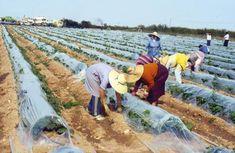
Weather conditions in Latin America and Spain are taking their toll and shaping the melon supply picture.
The Brazilian season is almost over after senders in the north-east of the country suffered unseasonably heavy rains in January. The harvest was severely hampered as a result and volumes reduced.
Costa Rica has now taken up the baton, but the Central American country has also suffered adverse weather. Rainfall in November delayed planting and the season is some two weeks behind schedule across all the major lines: Galia, Canteloupe and yellow melons.
Spain will be the next source to come on stream, but the situation is not straightforward. "Spain like the rest of Europe is suffering very variable weather and melons in Murcia being transplanted are for the first time ever being affected by frost," said Jez Spikings of importer Janic. "It is a bit of a cause for concern, but is still early days."
Almeria is the first Spanish region to start harvesting melons and Janic expects to have Galia and Charentais from April 5 with Canteloupe and yellow melon available from April 20. Maincrop fruit from Murcia usually comes on stream in June and dovetails with supplies from Almeria.
But the recent cold snaps are also being felt on the Almeria crop. "We are not at the stage where there is a major problem, but we will see less fruit this year and we are expecting lower volumes," said Spikings.
Juan Carlos Pérez of exporters' association Coexphal in Almeria confirmed that volumes are down. "This year we expect production to be 20 per cent lower than last year as plantings are down," said Pérez. "People are finding the crop less and less profitable and prices were poor last year: some 20 per cent down on 2002 with volumes 40 per cent up."
Transplanting is all but complete in Almeria and 50 per cent of the crop is Galia, some 15 per cent yellow melon and 35 per cent Cantaloupe.
Janic also brings in melons from Sicily as well as other production areas in Italy and from Morocco. This fruit runs alongside fruit from Almeria to until the start of the Murcia maincrop and its finish before Brazilian product is available in volume.